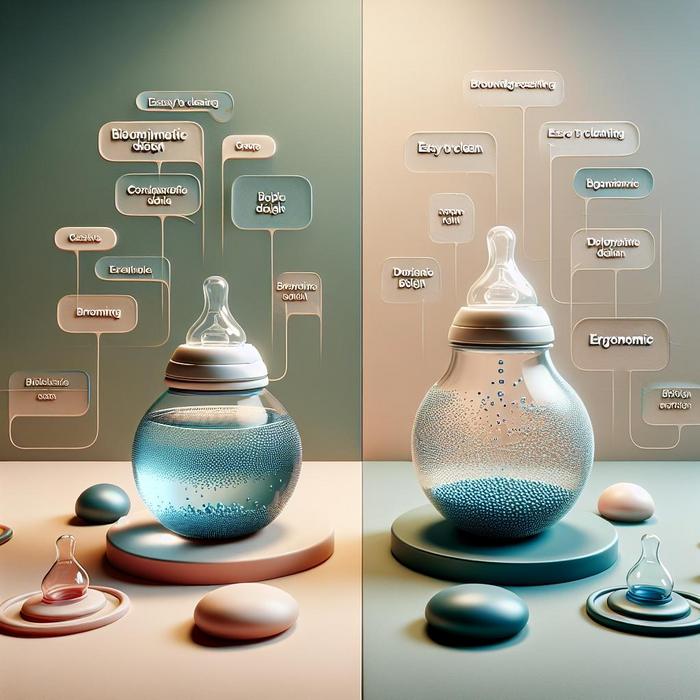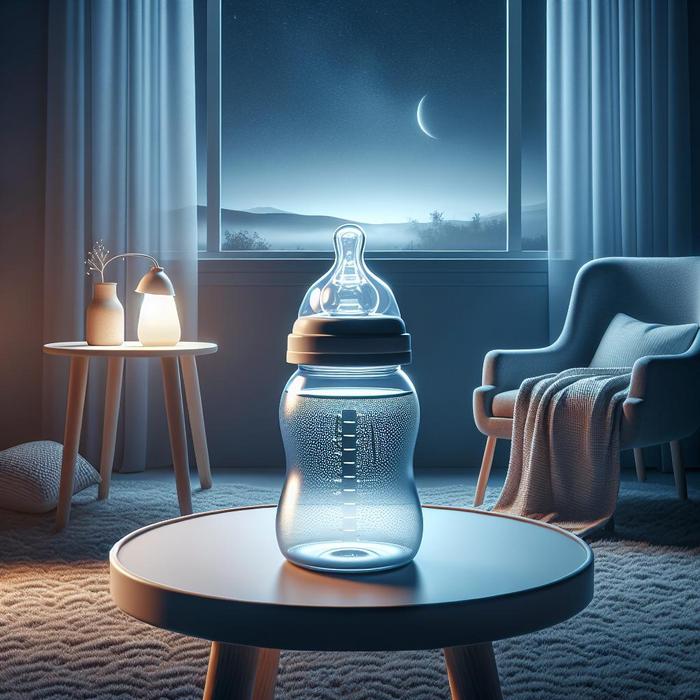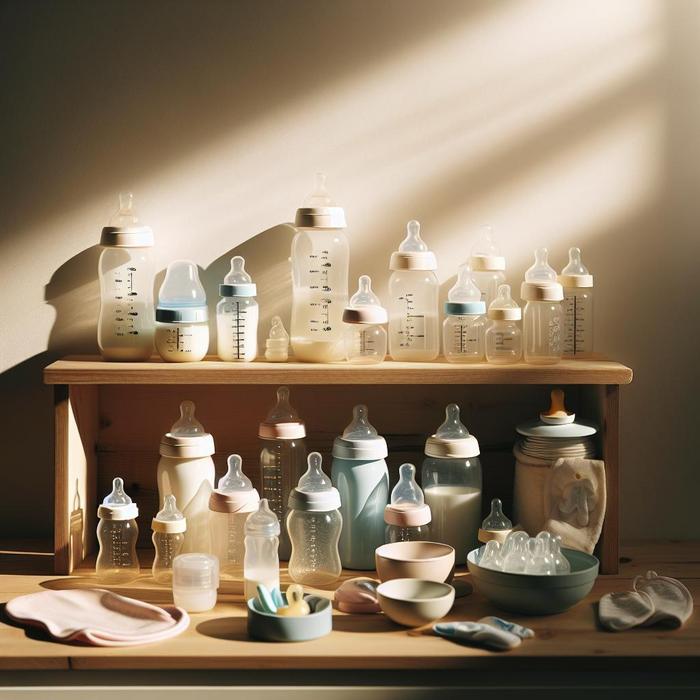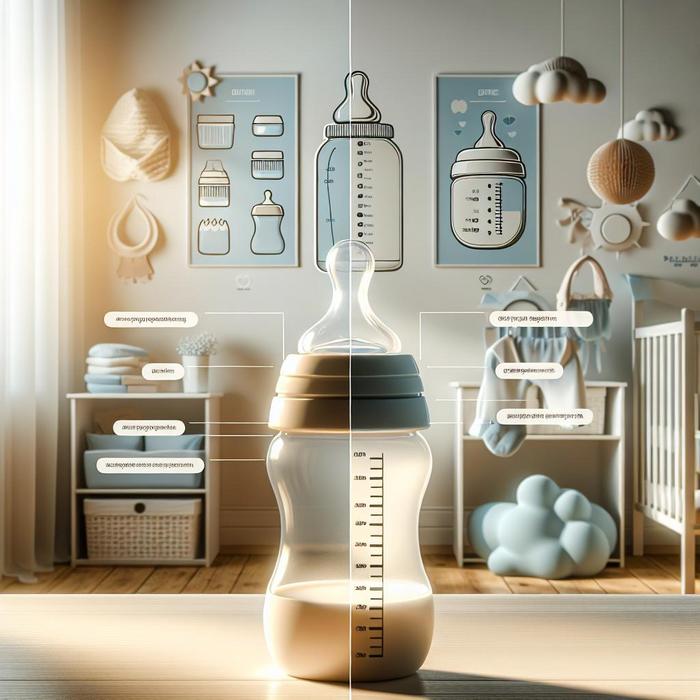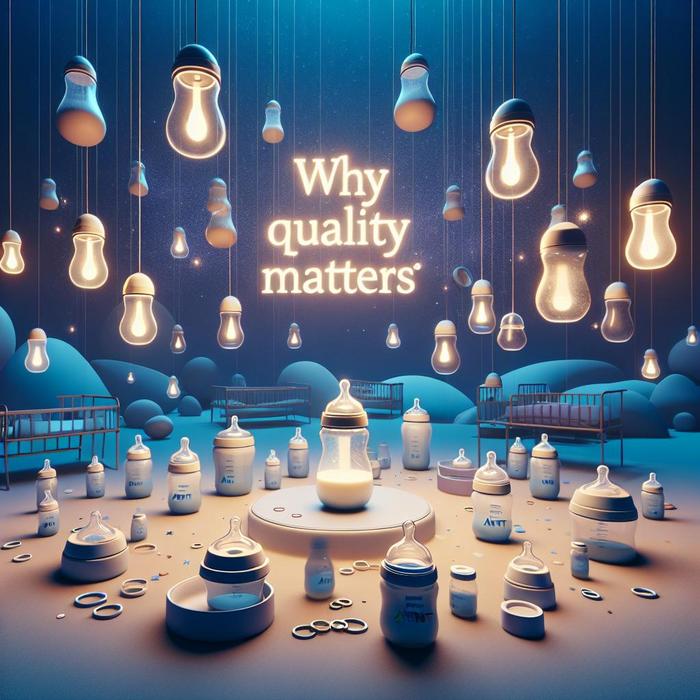Understanding Biomimetic Feeding
As new parents, we often get swamped with advice about the best feeding practices for our babies. From breastfeeding to bottle-feeding, it can sometimes feel overwhelming. One term that’s been gaining popularity in recent years is “biomimetic feeding”. But what does it mean?
In layman’s terms, biomimetic feeding is when the baby’s feeding tool – usually a bottle – is designed to mimic the natural nursing process as closely as possible. This can help make the transition from breast to bottle more seamless, and reduce rejection and nipple confusion.
What Makes a Bottle Biomimetic?
What sets biomimetic bottles apart from regular feeding bottles are features such as wide, breast-shaped nipples, soft, skin-like material and more flexible and soft-touch bottles. These features contribute to simulating a natural nursing experience, making them ideal for mixed feeding or for when breastfeeding is not an option. Let’s look at two popular brands – Nanobébé and Philips Avent – that fall under this category.
Nanobébé: Pioneering Breast Milk Preservation
Nanobébé is one brand that truly stands out in the biomimetic feeding category. Their innovative bottle design not only looks modern and stylish, but it’s also created with a mom’s breast in mind. Its shape, combined with the nutrient-preserving technology, makes it one of the leading choices for parents wanting to provide their baby with a feeding experience close to breastfeeding.
Reddit discussions about Nanobébé bottles have been generally positive, with parents praising the brand for its unique design and practical benefits.
Philips Avent: Natural and Comfortable Feeding Experience
Philips Avent, a leading infant product manufacturer, has also come up with a line of biomimetic bottles. Their Natural baby bottle boasts a wide, breast-shaped nipple design meant to encourage a latch as natural as possible, which can help when alternating between breast and bottle feeding.
Parents reviewing the Philips Avent Anti-colic Bottle have found its design to be quite effective, providing an experience close to breastfeeding and helping to reduce colic and discomfort.
Comparing the Bottles: Nanobébé vs Philips Avent
While both brands have their unique selling points, choosing between them depends on your personal requirements and your baby’s preferences. Remember, what works for one baby may not necessarily work for another.
Despite the differences, both Nanobébé and Philips Avent bottles have been designed with the same goal in mind – to make the feeding experience as natural, comfortable, and beneficial for your baby as possible. So, consider your baby’s needs, your lifestyle and perhaps give both a try to find the one that fits best.
Remember, transitioning from breast to bottle can sometimes be a challenge for both mother and baby, but with patience, the right information and the perfect biomimetic bottle, the process can be much smoother and less stressful.
The Transition Challenge
Transitioning from breast to bottle is no easy feat. As a mother, I vividly recall the stress and uncertainty that my child and I experienced. Like many parents, I was resolved to make this transition as smooth as possible for my little one. This led me to venture into the world of biomimetic feeding and the remarkable benefits it offers.
Researching about biomimetic bottles, I read numerous articles and chatted with experienced moms in various online forums. Following multiple recommendations, we tried both Nanobébé and Philips Avent bottles, which had a significant positive impact helping to ease the transition for my little one.
Personal Experience with Nanobébé
On discovering Nanobébé via TikTok, I was intrigued by its innovative design. The bottle’s shape helped retain nutrients usually lost during warming and its breast-like structure made the shift from breastfeeding nearly seamless for my baby. Its wider base, short nipple and flat shape proved beneficial in reducing both nipple confusion and bottle rejection.
Though a bit on the pricier side, this product was certainly worth the investment. Between less fussing and better sleep, the impact on our daily lives was tangible. Nanobébé offers not only innovative design but also a successful transition for breastfed babies.
My Trial with Philips Avent
Having heard positive reviews about Philips Avent, we were eager to give it a try. Its broad, breast-shaped nipple encouraged a natural latch and the bottle’s ergonomic shape made it comfortable for both me and my child to hold during feedings. Notably, the Philips Avent Anti-colic Bottle has an advanced anti-colic system, designed with a twin-valve vent that worked wonders to decrease colic and discomfort.
Moreover, its simple-to-assemble three-piece system won my heart. As a working mom, I appreciated this time-saving feature. With Philips Avent, my child had less trouble latching, and the transition from breast to bottle was surprisingly comfortable.
Nanobébé vs Philips Avent: The Decision
Both Nanobébé and Philips Avent offered us benefits we hadn’t previously found. After a couple of weeks of alternating between the two, we noticed fewer instances of colic, and overall, feeding times became less stressful.
But did one stand out over the other for us? To my surprise, my child responded equally well to both, and we decided to continue using them interchangeably. Our experience demonstrates the importance of individual needs and preferences in decision-making. I can’t stress enough how each child is unique, and what works for one may not necessarily work for another.
In our journey towards biomimetic feeding, the transition from breastfeeding to bottle-feeding was made less challenging, thanks to Nanobébé and Philips Avent. A more complex path now feels manageable, and remarkably, feeding times have become something we both look forward to! No longer just a feeding necessity, bottles have become an essential part of our bonding time.
Takeaway
Biomimetic feeding is a step that can bring great benefits for both you and your baby. Whether you choose Nanobébé or Philips Avent, or decide to try both, like we did, remember that patience and persistence are key during this transition phase. My journey into the world of biomimetic feeding has been nothing short of an enlightening experience, reassuring me that the right decisions can indeed make a remarkable difference. To all new parents out there, don’t be afraid to venture and find what works best for you and your baby.
Here’s to smoother and happier feeding times!
